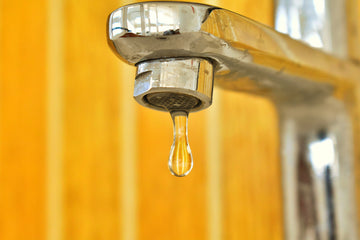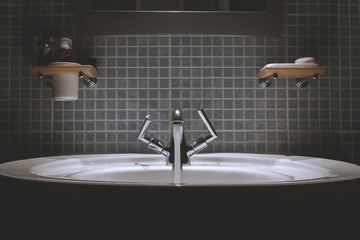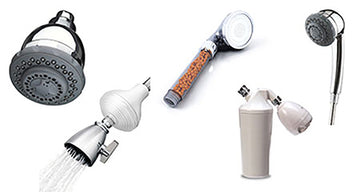Can Hard Water Be Softened To Soft Water? What Is Water Softening and How Does It Work?
by AlbertLucas on May 28, 2021


Can Hard Water Be Softened To Soft Water?
The previous article has introduced the knowledge of hard water and soft water, as well as the pros and cons of these two types of water. Then some of you will surely ask, "Can hard water be softened to soft water?" Well, the answer is yes.
What Is Water Softening and How Does It Work?
The process of softening hard water into soft water is called water softening. Hard water is water that contains too many minerals, and it’s especially rich in large amounts of calcium and magnesium carbonates, but also ferrous iron.
So water softening is the process through which the calcium, magnesium, and other metal cations in the water are removed. This is done by changing the calcium and magnesium ions’ charges. The calcium and magnesium ions in the water carry positive charges.
The water softener pushes the water through a tank filled with negatively charged beads. As the water passes through the tank, the positive calcium and magnesium ions will cling to the beads instead of floating through the water.
Instead of keeping the magnesium and calcium for themselves, the beads trade them with similarly charged elements. And most of the time, the chosen element is sodium. Sodium ions are positively charged. While they’re not as powerful as the calcium and magnesium ones, they can make up for it in sheer numbers. After the water passes through the beads and the minerals cling to their surface, the beads will be flushed with a strong brine solution. Every water softener has a separate brine tank that holds the brine solution.
Here’s a simplified version of how this works:
- The hard water enters the mineral tank
- The magnesium and calcium ions cling to the beads and displace the sodium ions.
- The sodium ions go in the water instead of the calcium and magnesium
- The water softener starts its regenerating cycle
- The water flow is reversed to clean the water tank
- The brine solution enters the mineral tank
- The sodium ions replace the magnesium and calcium ions on the beads
- The calcium and magnesium ions are flushed down the drain
- The mineral tank is flushed with the brine solution
- The brine tank is refilled.
- The process is now ready to start again.
How To Soften Water At Home?
Try The Boiling Method to Soften Water
The cheapest way of softening your water is probably by boiling it. The effect will be different depending on the quality of water supplied to your house. Boiling water will not remove all leftover mineral deposits that make the water hard. It will just remove the so-called temporary hardness which is formed by the dissolved bicarbonate minerals.
The best you can do is try and see how it will work for you. After the water has been boiling for a few minutes it must be left to cool off. The heavier minerals should have settled at the bottom of the pot, so you can leave them behind and use the softened water. However, It's obviously that this method would be suitable if you only need a small quantity of water. And what is important is that once you’ve boiled and softened the water, it's best to keep it unexposed to the environment to avoid reaction and contamination.
Ion Exchange Filtering
These filters are designed to deal not only with the temporary hardness in water but also the permanent one, which is caused by the calcium and magnesium sulfate minerals. What is meant by “exchange” is that the chloride ions are exchanged with sodium ones, which are much more soluble and do not form scale. But anyway, the minerals in hard water are in fact healthy for the human body, lacking them is bad for health.
Chelation System
If you are looking for someway that will not remove the minerals from hard water but simply keep them from forming scale, then you can choose chelation water softening systems. The chelation system is a salt-free system, using acid to serve as an agent to which the mineral ions adhere. It will not decrease the minerals or remove them, which is good for your health and still keep them from forming scale and causing damages to appliances. Like any other system this one will take some space.
Reverse Osmosis System
Reverse osmosis system is also known as hyperfiltration, and it’s one of the best water treatments available for households.This system gradually eliminates the particles in the water, and the end result is healthy and extremely clean tap water.A reverse osmosis filtration system will push the water through multiple filter mediums until almost all the elements present in the water are removed from it. You can say that this filtration system purifies the water at a molecular level. But you have to have in mind that this system needs good, healthy water pressure to work, so if the water pressure in your home is not that good, then you must consider another option.
This kind of water cleaning and softening method always needs to be mentioned with an emphasis on the necessity of changing the filters promptly. A dirty filter is much worse than no filter!

Article content reference source: https://www.waterfiltermag.com/water-softener-shower-heads/, by David Adams




